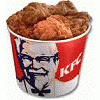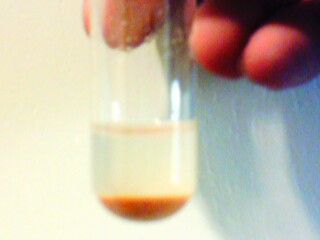-
Posts
295 -
Joined
-
Last visited
Content Type
Profiles
Forums
Events
Everything posted by KFC
-
Doesn't It Make Trinitrotoluene? But Then You A Have To Ignite It Then It Goes Boom.
-
What If There Is More Volume In The 10 Test Tubes Then The Flask Can Fill But You still Want To Fill the Flask With The 10 Test Tubes Hydrogen. How Would You Do This
-
I Have 10 Test Tubes Full Of Hydrogen. I Want To Put All Those Test Tubes Of Hydrogen Into A 350mm Flask. How Would I Do This And I Want It Pure As possible?
-
Sorry The Camera Is Blurry But What Is The Sediment And WHat Do You Think The liquid Is ?
-
How Do I Make White Phosphorus Out Of Red Phosphorus ?
-

What is the most indestructible solid known to man?
KFC replied to GrandMasterK's topic in Chemistry
Hows About Anti Matter ? -
-
-
I Mean What Make Glow In The Dark Plastic Glow In The Dark?
-
I Took A Look At The Solution To Day And There Is Sediment That Is Yellowy Orange Like Orange Juice Yellow And There Is A liquid That Is Clear above It.
-
Oh, Sorry Well Then What Was The Sulution . P.S. I Used Copper And Graphite Electodes.
-
What Phosphorus Compound Glow In The Dark Want Exposed To Photons And How Do You If Possible Make With A Home Lab ?
-
Is It Expensive To In The US ?
-
How Do You If Possible Make Carbide With A Home Lab ?
-

What heats up the fastest? Salt, sweet or tap water?
KFC replied to Snowfynn's topic in Applied Chemistry
Tap Water Would (Less Impurities). I'm Assuming There All Solutions And/Or If The Salt Is Over A Flame If A Solid. -
Is there Anyway To Make Carbide Out Of Urea ?
-
I Carried Out An Experiment At This Site http://www.wfvisser.dds.nl/EN/chlorate_EN.html .I Don't Think I Got It Wright I Ended Up With Sulphur Color Solution Similar To Yours What Is This Solution And Is It Explosive And If It Isn't How Do I Make Explosive?
-
hermal decomposition of hypochlorites This is an alternative method of chlorate manufacture. It is more laborous than the electrolytic method, and can only be used for small batches at a time. The starting materials are quite easily available however as bleach and pool chlorinating agents and it only requires the use of simple tools. 3.1 Starting materials Possible starting materials are sodium hypochlorite and calcium hypochlorite. The former is available in solution as bleach and antifungal spray for bathrooms. Calcium hypochlorite finds use as a chlorinating agent for pools. However, different varieties exist. Carefully read the package to make sure you have the right material. It usually states a '85% available chlorine' content for calcium hypochlorite. A higher available chlorine content may mean it is something else, most likely trichlorohydrocyanuric acid. 3.2 Method Depending on the starting material, sodium or calcium hypochlorite, a different procedure must be followed. Each is described separately below. Procedure when using sodium hypochlorite It is assumed bleach will be used, which is usually a 4% solution of sodium hypochlorite in water. If a less or more concentrated solution is used, adjust the amounts accordingly. 1. Take 1 liter of bleach, and place this in heat resistant glass or stainless steel container. Bring it to a boil. 2. Boil the solution untill only about 140 ml of solution is left. The exact volume is not critical, a deviation of 10 to 20 ml is acceptable. 3. Allow the solution to cool. If crystals form upon cooling, filter the solution after it has completely cooled. The crystals are sodium chloride and can be discarded. 4. In a separate container, prepare a solution of potassium chloride. Dissolve 28 grams of potassium chloride in the smallest volume of water possible (about 80 ml). This can be done by dissolving the potassium chloride in about 90 ml of boiling water, and allowing it to cool. If crystals form, add some more water, boil again to dissolve the potassium chloride, and allow to cool again. If crystals form, repeat. If not, the solution is ready to use. 5. Mix the boiled bleach solution with the potassium chloride solution. A white precipitate should form. This is potassium chlorate. 6. Bring the solution to a boil and add water untill all potassium chlorate has dissolved. 7. Allow the solution to cool slowly. Crystals of potassium chlorate will form. Cool the solution to 0 deg C. 8. Filter to obtain the raw potassium chlorate. Rinse the crystals in the filter with ice-cold water. The product can be further purified as described below. Procedure when using calcium hypochlorite warning: On one occasion an small explosion occured when I was doing this preparation. I am not sure exactly what caused the explosion. It seems to have been a steam explosion. I was also not sure wheter I was using calcium hypochlorite or trichlorohydrocyanuric acid, another common pool chlorinating agent. It seems to be very uncommon that explosions happen and they can probably be prevented by vigorous stirring, but I thought everyone attempting this method should know so proper precautions can be taken. The procedure below has been optimised to reduce the chances of an explosion happening. 1. Place 250 ml of water in a heat resistant glass or stainless steel container, large enough to hold twice that volume. 2. Bring the water to a boil. 3. To the boiling water, add 125 gram of calcium hypochlorite in 10 gram portions. The calcium hypochlorite usually comes in tablets, which need to be crushed first. Stir vigorously during this step, occasionally scraping over the bottom to prevent the formation of a cake of calcium chloride. The solution will foam a lot. If too much foam is developed, do not add any more calcium hypochlorite and boil untill the foam subsides. Then continue adding calcium hypochlorite. 4. When all calcium hypochlorite has been added, continue boiling untill no more foaming is observed. Stir continuously. 5. Allow the solution to cool down, and filter to remove the precipitated calcium chloride. 6. In a separate container, dissolve 68 grams of potassium chloride in the smallest volume of water possible (approximately 195 ml). This can be done by dissolving the potassium chloride in about 200 ml of water, and allowing it to cool. If crystals form, add some more water, boil again to dissolve the potassium chloride, and allow to cool again. If crystals form, repeat. If not, the solution is ready to use. 7. Mix this solution with the boiled calcium hypochlorite solution. A white precipitate of potassium chlorate should form. 8. Bring the solution to a boil and add water untill all potassium chlorate has dissolved. 9. Allow the solution to cool slowly. Crystals of potassium chlorate will form. Cool to 0 deg C. 10. Filter to obtain the raw potassium chlorate. Rinse the crystals in the filter with ice-cold water. The product can be further purified as described below. 3.3 Purifying the product The product can be purified by recrystallisation, just like the product of the electrolytic procedure. For convenience, the same procedure is given again here: 1. Place the crude product in a pan and add 100 ml of water for every 20 g of crude product. Bring this to a boil. 2. Add 20 ml amounts of water to the boiling solution untill all the potassium chlorate has dissolved. 3. Check the pH of the boiling solution. It should be neutral or slightly alcaline. If it is acidic, add potassium hydroxide solution untill it is slightly alcaline (pH 7..8) again. If this is not done, traces of acid may be included in the product making it very dangerous to use in pyrotechnic compositions. 4. Allow the solution to cool to room temperature. Potassium chlorate will crystalise. 5. Filter and rinse the crystals well with ice cold water. The filtrate may be discarded or concentrated by evaporation and the residue added to the electrolyte for a next batch. 6. The crystals may be dried in an oven at 100 deg C.
-
If You What An Electrical Fuse/Trigger You Can Use A Broken Christmas Light And A 9VDC Battery That Will Do The Trick. Or Wrap Very Thin Wire On Each Side Of A 1 Inch Piece Of Mechanical Pencil Graphite 7 mm. And Hook That Up To Two D 1.5VDC Battery. That Will Heat Up Hot Enough To Ignite A Match Tip Or A Firework. That Should Do
-
What Phosphorus Compounds Glow In The Dark After Being Exposed To Photons?
-
Can Seizures Have Anything to do With Sleep or Stress.
-
Send Your Myths To The MythBusters There On The Discovery Channel Post Them Here http://community.discovery.com/groupee/forums/a/frm/f/9701967776
-
Oh!!!!!!!!!!!!!!!! Holy Crap If You Inhale It Once Does It Stich Around or Is It Just As you Inhale It!!! I Don't Feel Any Different Could There Be Anything Wrong? Oh Man!!!
-
Is There Anyway To Control My Dreams At All.



